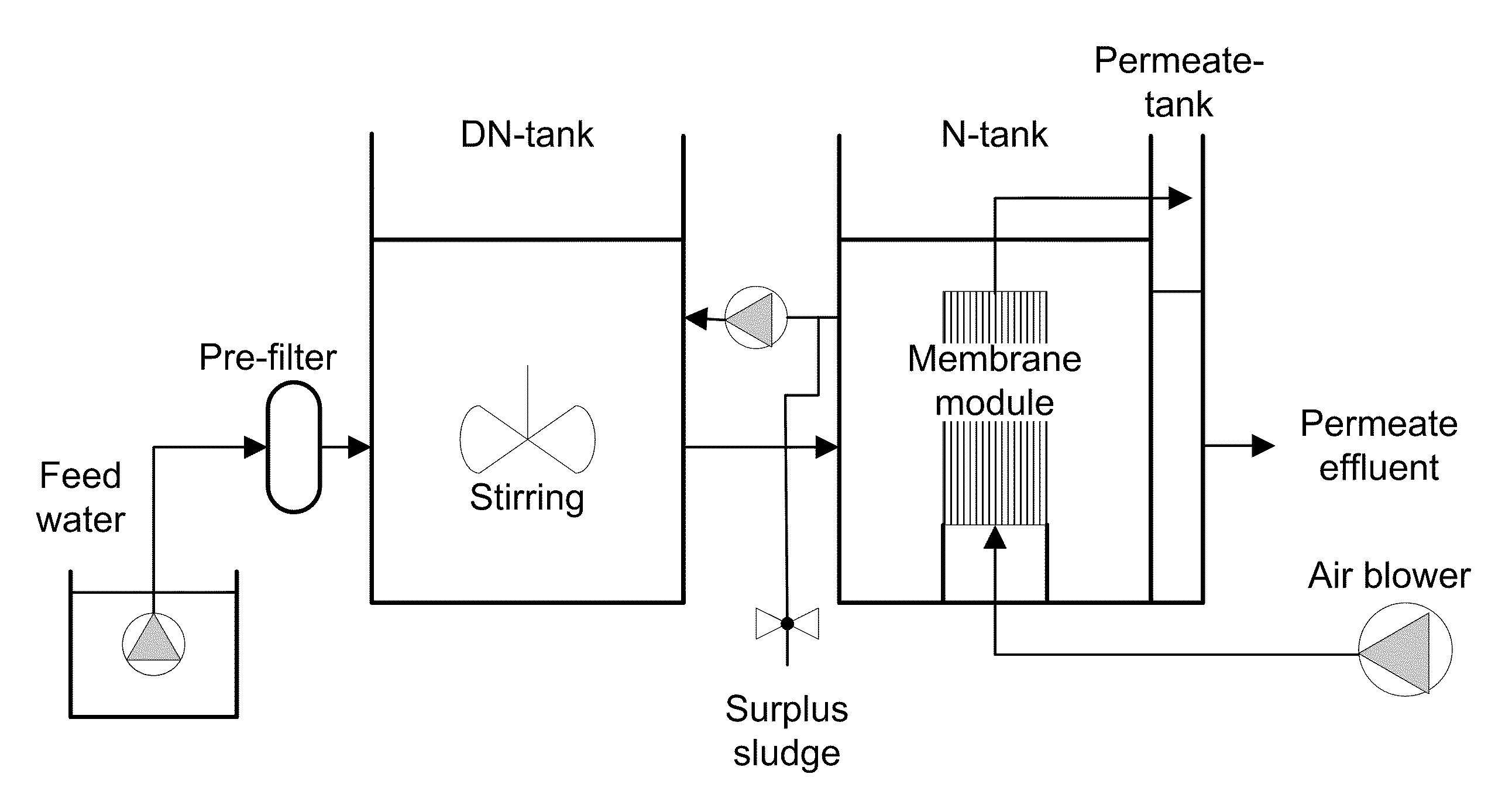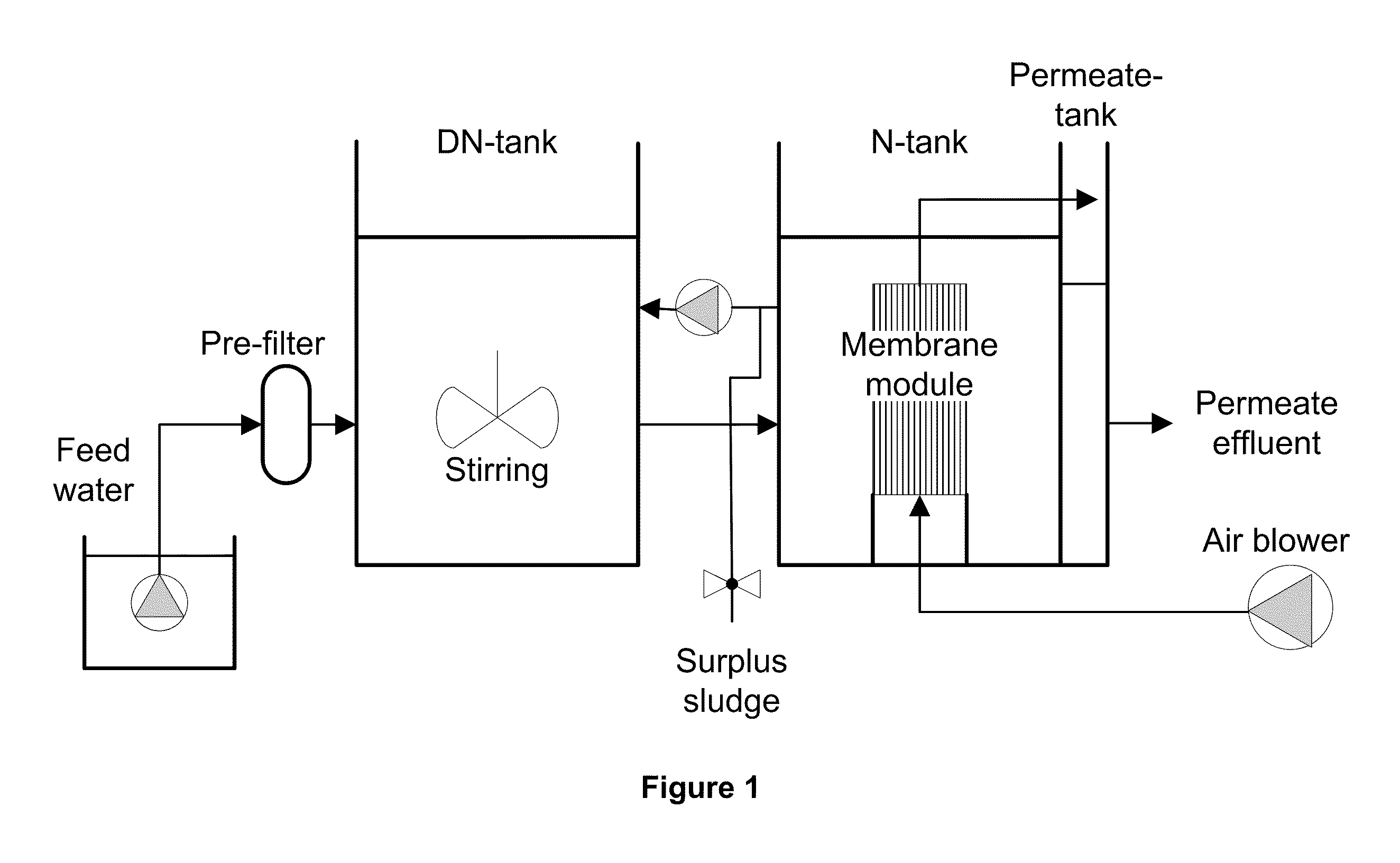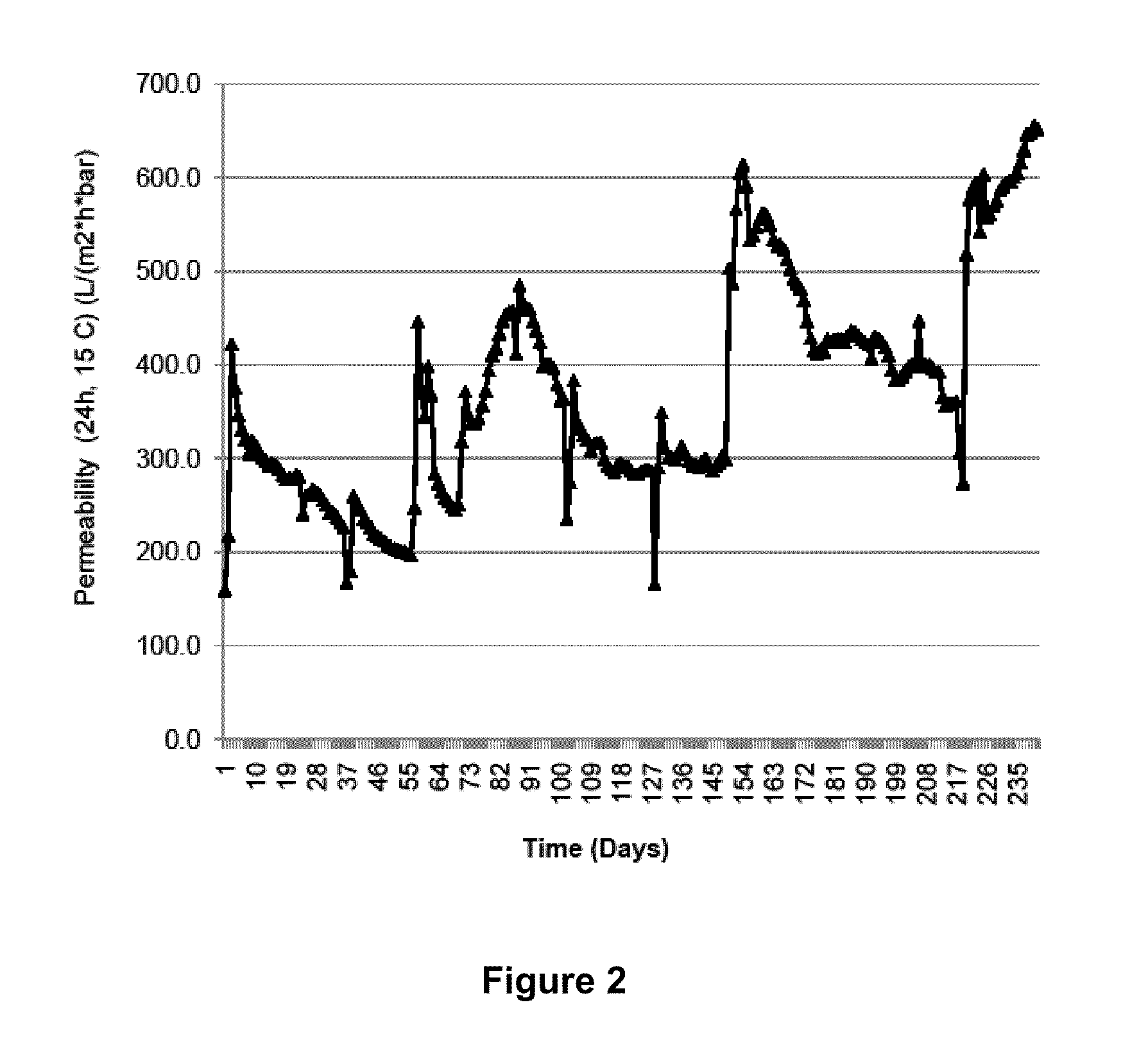Methods, compositions and systems for controlling fouling of a membrane
- Summary
- Abstract
- Description
- Claims
- Application Information
AI Technical Summary
Benefits of technology
Problems solved by technology
Method used
Image
Examples
example 1
Method for Screening Candidate Strains Capable of Reducing or Preventing Anti-Fouling in MBR Systems
[0145]Candidate strains were grown and cultured over an approximately 16 hour period subject to shaking at 25° C. in 1× Lysogeny Broth (10 g Tryptone; 5 g yeast extract; 1 g NaCl, and deionized water to 1 liter). Candidate strains were then counted using a hemocytometer and then serial diluted to a concentration of 1×103 cells / ml. Each well of a PVDF (poly(vinylidene fluoride))-bottomed 96-well plate (Millipore® no.: MSGVS2210) was filled with 100 microliters sterile 0.1× Lysogeny Broth. 100 microliters of the diluted candidate strains were added to the well. Those wells not including the addition of candidate strains were filled with 100 microliters sterile 1× Lysogeny broth. The 96-well plate was sealed with Breathe Easy® plate sealing film and placed on a plate shaker for approximately 16 hours at 25° C.
[0146]Pseudomonas aeruginosa PAO1 was selected as a biofilm-forming strain and ...
example 2
Lab Scale MBR Model (PVDF)
[0151]Lab-scale MBR systems were prepared using 0.5× Lysogeny Broth (5 g Tryptone; 2.5 g yeast extract; 0.5 g NaCl, and deionized water to 1 liter) flowing via gravity feed into an Amicon 8200 stirred cell ultrafiltration unit (Millipore, Billerica, Mass., USA) fitted with a 63.5 mm diameter (28.7 cm2 effective area) PVDF membrane that had been treated with 95% isopropanol prior to use followed by sterilization with 10% perchlorate. The filtration devices were inoculated with spores of strains of interest at a rate of 2×106 cfu / cm2 and incubated for 24 hours at 25° C. with constant stirring at approximately 125 rpm and a flow rate of 8.5 ml / hr / cm2. A control unit was prepared similarly but was not inoculated with a strain of interest. After 24 hours incubation, the units were inoculated with 2×104 cfu / cm2 Pseudomonas aeruginosa strain PAO1, a known biofilm forming organism and the flow-through rates of all concurrently running filter units were adjusted to ...
example 3
Lab Scale MBR Model (PES)
[0155]A lab-scale MBR experiment was constructed similar to that described in Example 2 utilizing a polyethersulfone (PES) membrane as opposed to the PVDF membrane. MBR units were inoculated as in Example 2 with either NRRL B-50141 or NRRL B-50136. A control unit was prepared similarly but was not inoculated with a strain of interest. Filter units were allowed to operate for 50 hours under the conditions specified in Example 2 and flow rates through the membrane were determined at regular intervals by measuring the volume of effluent discharge from each of the filter units over a 5 minute period. The measurement at the 48 hour timepoint (F48) was taken as the best indication point for flow comparison.
(F0−F48)*100 / F0=% decrease in flow
[0156]The efficacy of strains NRRL B-50141 and NRRL B-50136 at maintaining flow rates through a PES membrane was determined and is provided in Table 3.
TABLE 3Flow decrease% Pro-Strain (Genus, species)Numberat 48 hourstectionPseu...
PUM
 Login to View More
Login to View More Abstract
Description
Claims
Application Information
 Login to View More
Login to View More - R&D
- Intellectual Property
- Life Sciences
- Materials
- Tech Scout
- Unparalleled Data Quality
- Higher Quality Content
- 60% Fewer Hallucinations
Browse by: Latest US Patents, China's latest patents, Technical Efficacy Thesaurus, Application Domain, Technology Topic, Popular Technical Reports.
© 2025 PatSnap. All rights reserved.Legal|Privacy policy|Modern Slavery Act Transparency Statement|Sitemap|About US| Contact US: help@patsnap.com



